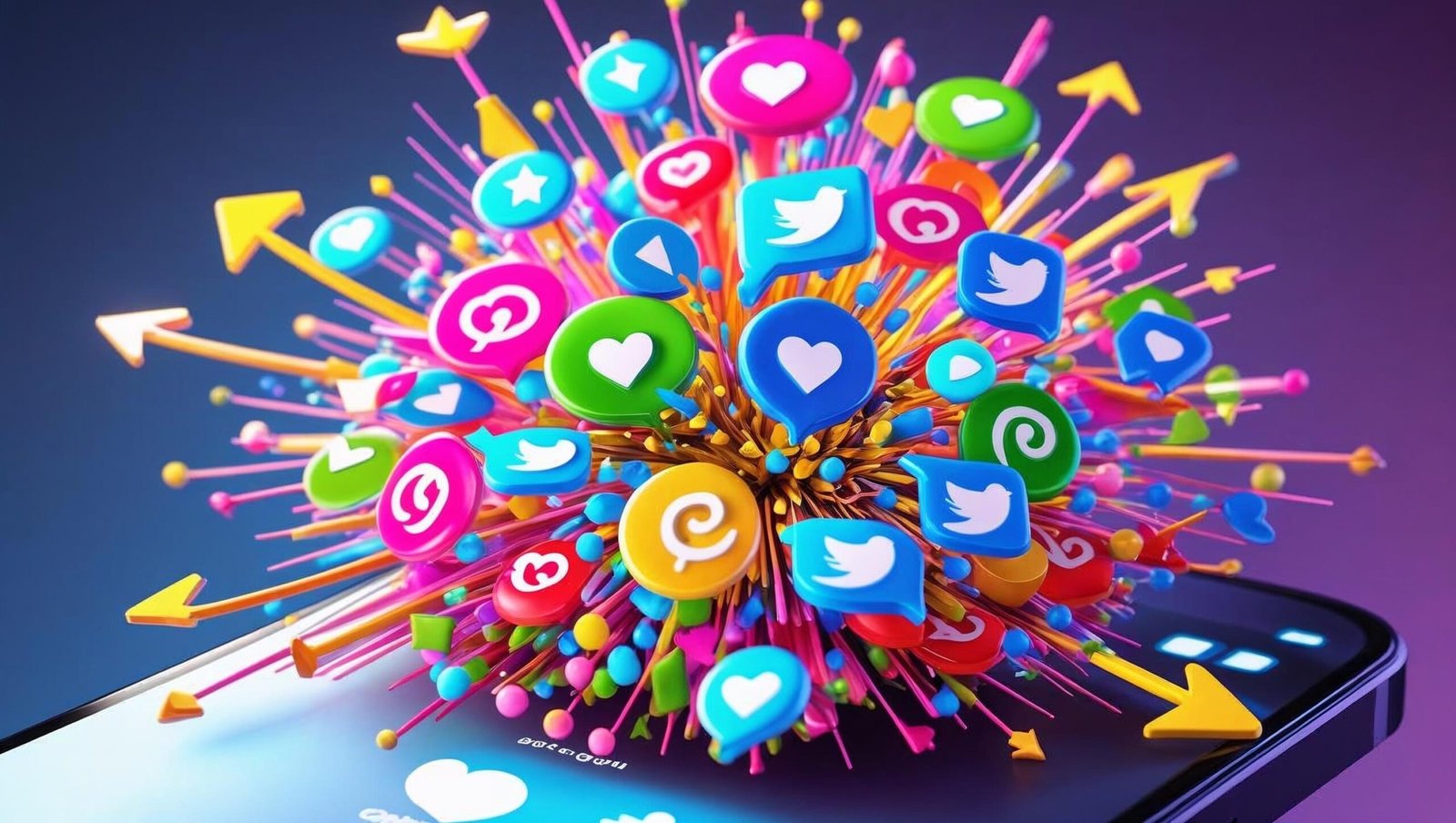Deep Dive: Psychological Foundations Behind The Tipping Point
Introduction
In the vast realm of contemporary non-fiction, few books have managed to penetrate the public consciousness and provoke thoughtful discourse quite like The Tipping Point by Malcolm Gladwell. Published at the turn of the millennium, this seminal work seeks to demystify the invisible mechanics that dictate how small changes can result in sweeping societal transformations. Through a masterful blend of anecdote and analysis, Gladwell introduces the notion that trends, epidemics, and ideas behave much like viruses – requiring only the right combination of elements to reach a tipping point.

Part I: Understanding the Tipping Point
Gladwell begins his treatise by posing a profound and deceptively simple question: Why do some ideas or behaviors explode in popularity while others fade into obscurity? The answer, he argues, lies not in randomness but in a finely tuned interplay of specific agents, environmental conditions, and the intrinsic quality of the idea itself.
He introduces the metaphor of a tipping point, borrowed from epidemiology, to explain how behaviors and ideas “spread like viruses.” This core analogy forms the foundation of the entire book – and its brilliance lies in its relatability. From fashion trends to the rise of crime or sudden declines in smoking rates, Gladwell reveals that massive changes are often the result of a few critical influences, not sweeping forces.
Part II: The Three Rules of Epidemics
1. The Law of the Few
This principle posits that a small group of individuals, often underestimated, holds disproportionate power in initiating social trends. These influencers are categorized as:
-
Connectors: People who know an extraordinary number of individuals across various social strata and industries. They form the bridges that link otherwise disconnected social groups.
-
Mavens: Individuals who accumulate and share knowledge, especially around products and services. Their reputation for trustworthiness and intelligence makes their opinions highly influential.
-
Salesmen: Charismatic persuaders whose energy and emotion are contagious. Their power lies in their ability to persuade people who might otherwise remain indifferent.
Gladwell underlines the significance of each type by using captivating real-life examples—from Paul Revere’s midnight ride to sneaker trends in New York City.
2. The Stickiness Factor
For an idea to truly stick and spread, it must possess inherent memorability and impact. Gladwell explores the psychology of memory and learning by citing examples like the educational strategies used in Sesame Street and Blue’s Clues. These shows are designed not just to entertain but to engage the brain in a way that content becomes, well, sticky.
The Stickiness Factor is what makes an idea unforgettable. It’s the element that causes someone not only to absorb the message but to act on it or pass it along.

3. The Power of Context
This rule emphasizes that human behavior is profoundly shaped by external environment and situational cues. Minor shifts in context can radically alter outcomes. Gladwell illustrates this with the “Broken Windows Theory,” which suggests that visible signs of disorder (like graffiti or broken windows) encourage further crime and decay.
He also brings in the famous example of the drop in New York crime during the 1990s, arguing that seemingly small environmental changes (like cleaning subways and fixing vandalism) contributed greatly to the decline.

Part III: Real-World Case Studies and Applications
Gladwell’s theory is not confined to the abstract. He provides practical case studies that demonstrate how these rules apply across domains:
-
Marketing: Products like Hush Puppies saw explosive growth after being adopted by a handful of influencers in New York’s fashion underground.
-
Public Health: Campaigns to reduce teenage smoking fail when they ignore the social dynamics and influencers among teens.
-
Education: Programs that increase classroom engagement often rely on understanding stickiness, not just curriculum content.
-
Crime Prevention: The dramatic drop in New York crime rates is re-examined through the lens of contextual change and peer influence.
Criticism and Counterpoints
While The Tipping Point has been hailed for its fresh perspective and engaging storytelling, it has not escaped criticism:
-
Oversimplification: Some critics argue that Gladwell’s theory reduces complex social dynamics to overly simplistic models.
-
Lack of Rigorous Evidence: Others note that many of the case studies are anecdotal and lack scientific control, potentially weakening their conclusions.
Nevertheless, these criticisms have done little to diminish the book’s impact. It remains a foundational text in modern marketing, behavioral science, and sociology.

The Book’s Enduring Relevance
In today’s digital world—characterized by viral trends, influencer marketing, and social media epidemics—The Tipping Point is more relevant than ever. Understanding how content goes viral, why a product suddenly gains traction, or how societal behaviors shift can often be traced back to Gladwell’s core principles.
Whether one is a startup founder, a teacher, a policymaker, or a parent, the lessons of The Tipping Point offer universal applicability.
Frequently Asked Questions (FAQs)
Q1: What is the core message of The Tipping Point?
A: That small, strategic actions by influential individuals, combined with sticky messaging and conducive environments, can trigger massive change.
Q2: Who should read The Tipping Point?
A: Anyone interested in social behavior, marketing, psychology, or understanding why things become popular.
Q3: How is The Tipping Point relevant in the digital age?
A: It provides a framework to understand virality, influencer culture, and behavioral shifts in the age of social media and content creation.
Q4: What are the three main rules in the book?
A: The Law of the Few, The Stickiness Factor, and The Power of Context.
Q5: Are Connectors, Mavens, and Salesmen real psychological types?
A: While not scientific terms, they are archetypes that help explain the roles different personalities play in spreading ideas.

For more insightful book reviews and thought-provoking content, visit
What makes The Tipping Point so compelling is its intersection with deep-rooted psychological principles. Although Malcolm Gladwell simplifies his message for a general readership, the ideas he explores echo decades of academic research in behavioral psychology, sociology, and cognitive science.
One major psychological underpinning of The Tipping Point is the concept of social proof. People often look to others when deciding how to behave in uncertain situations. This creates fertile ground for Connectors and Mavens—two types of influencers identified by Gladwell—to thrive. Their behavior becomes the “proof” that encourages others to follow suit, pushing ideas closer to their tipping point.
Similarly, heuristics—mental shortcuts we all rely on—explain why sticky messages work so well. A message that is simple, emotionally resonant, and memorable cuts through our cognitive clutter and stays with us. Gladwell’s “Stickiness Factor” owes much to the psychological principle of attention and retention. These are not just marketing techniques—they are deeply human.
The genius of The Tipping Point lies in linking these academic theories to everyday phenomena in an engaging, relatable way. When you understand how the brain processes social cues, it becomes clear why small actions by a few individuals can lead to explosive outcomes.
The Tipping Point in Business and Branding
The business world has perhaps embraced The Tipping Point more enthusiastically than any other domain. Marketers, brand strategists, and entrepreneurs turn to the book as a kind of secular bible for launching products and cultivating loyal customer bases.
For example, consider Apple’s launch of the iPod. While technically superior music players already existed, Apple leveraged Connectors in the tech and music world, created a sticky advertising campaign (“1,000 songs in your pocket”), and took full advantage of the cultural context—people craving simplicity in a fragmented digital age. It was a textbook case of orchestrating The Tipping Point.
Similarly, small startups have used The Tipping Point framework to compete against giants. By identifying niche Connectors within tight communities (like Reddit influencers or niche bloggers), creating sticky messaging tailored to their audience, and launching in favorable digital environments, brands have nudged their products to viral status. This strategic method of leveraging The Tipping Point remains a go-to playbook for startups around the world.
Beyond product launches, customer loyalty programs and referral schemes often rely on the same three rules Gladwell outlines. A single influential customer can spark a word-of-mouth cascade when placed in the right context with the right tools.
Digital Age and the Evolving Tipping Point
When The Tipping Point was first published in 2000, social media had yet to revolutionize human communication. Today, in an era dominated by Twitter, Instagram, YouTube, TikTok, and LinkedIn, the book’s principles have gained even greater urgency.
In the digital landscape, The Tipping Point manifests almost daily. A tweet can spark a movement. A 15-second TikTok can launch a brand. A YouTube video from a teenage influencer can determine the success of a billion-dollar product.
But the speed of modern tipping points also reveals their fragility. The same factors that allow something to “tip” quickly can cause it to fade just as fast. Gladwell’s model still applies, but today’s connectors are content creators, YouTube reviewers, podcast hosts, and micro-influencers. Mavens may take the form of SEO experts, data scientists, or trusted review platforms. And salesmen? They’re the compelling personalities that populate livestreams and viral videos.
What remains unchanged is the framework. Even amid AI-generated content, algorithm-driven feeds, and attention economies, The Tipping Point continues to serve as a blueprint for understanding how ideas catch fire and spread.
Policy and Social Reform Through the Lens of The Tipping Point
Governments and public institutions have also begun to apply the lessons of The Tipping Point. Behavioral change campaigns—from reducing drunk driving to encouraging vaccination—often hinge on small, strategic changes that tip larger populations into action.
For instance, rather than broad-based campaigns, policymakers now look for local Connectors and Mavens within communities to drive adoption. In India, rural healthcare programs have used trusted village health workers (Mavens) to initiate behavior change around hygiene and vaccination—proving once again that The Tipping Point is both practical and scalable.
In the context of urban planning and crime reduction, applying the Power of Context has led to fascinating results. Cities that redesign public spaces to foster community engagement and reduce anonymity often see lower crime rates. These shifts demonstrate that the environment can be a powerful catalyst for tipping social norms and behaviors.
Case Study: The ALS Ice Bucket Challenge and Digital Tipping Points
Perhaps one of the most iconic modern examples of The Tipping Point in action is the ALS Ice Bucket Challenge. A single, seemingly trivial act—pouring ice water over one’s head—tipped into a global movement that raised over $100 million for ALS research.
How did this happen?
-
Connectors: Influential athletes and celebrities joined in early.
-
Mavens: Advocates within the medical and nonprofit sectors highlighted the impact.
-
Salesmen: Participants like Bill Gates and Oprah added charisma and credibility.
-
Stickiness: The act was novel, visual, easy, and fun.
-
Context: It launched during summer—perfect timing for a water-based activity—and coincided with growing interest in social activism online.
The ALS challenge exemplifies everything The Tipping Point represents: the convergence of key players, memorable actions, and contextual relevance to create outsized impact from seemingly small beginnings.
Academic Implications of The Tipping Point
Universities and research institutions have also adopted The Tipping Point as part of curriculum in psychology, sociology, marketing, and communication studies. The book’s interdisciplinary approach makes it a valuable teaching tool across a variety of fields.
Graduate-level discussions often focus on the ethical implications of tipping points. Is it right to “engineer” social behavior, even if the intent is noble? Can tipping points be manipulated in ways that are coercive or destructive?
These are complex questions, and The Tipping Point doesn’t pretend to have all the answers. But it provides a rich framework for exploring them—a testament to its intellectual depth.
Why The Tipping Point Still Matters in 2025
As we navigate an age defined by information overload, viral movements, and deep societal polarization, the insights of The Tipping Point are more essential than ever.
Whether you’re launching a brand, advocating for change, or simply trying to understand the world, Gladwell’s work provides a clear and compelling map. In an era where public discourse is dominated by algorithms and speed, the timeless wisdom of The Tipping Point reminds us that meaningful change still begins with a few well-placed influences in the right context.
It encourages readers to focus not on massive undertakings, but on precise, thoughtful actions that can cascade into profound outcomes.
🔹 1. The Tipping Point and Personal Development
The Tipping Point isn’t just for marketers or sociologists—it’s a lens for personal growth. Understanding how habits form and spread can help individuals craft transformative routines. Your life’s tipping point may lie in one tiny change, one new connection, or one consistent habit executed in the right context.
🔹 2. The Tipping Point in Book Publishing
In the publishing world, The Tipping Point itself became a prime example of viral success. It spread from niche readers to mainstream culture, propelled by word-of-mouth. Authors now study how their own work might reach its tipping point through literary influencers, sticky titles, and perfectly timed promotional context.
🔹 3. The Tipping Point in Education
Educators use The Tipping Point to design curricula that stick. By making lessons emotionally engaging and contextually relevant, teachers create classroom environments where understanding “tips” into genuine knowledge. A single inspiring educator can often be the tipping point in a student’s academic journey, altering their life trajectory entirely.
🔹 4. The Tipping Point in Fashion Trends
Fashion cycles demonstrate The Tipping Point in action. A niche streetwear look can explode into global prominence once a few celebrities and influencers adopt it. The stickiness of the aesthetic, combined with social proof and timing, shows how style movements rapidly evolve past a cultural tipping point.
🔹 5. The Tipping Point in Climate Action
Climate advocates study The Tipping Point to mobilize communities. A few passionate voices can push eco-conscious behavior into the mainstream. When the message is sticky, the advocates are persuasive, and the context is urgent, society may finally reach its tipping point toward sustainable living and policy change.
Conclusion
Malcolm Gladwell’s The Tipping Point stands as a towering contribution to our understanding of how change happens. With its elegant metaphors and accessible storytelling, the book distills complex phenomena into digestible, actionable insights. Whether it is the sudden popularity of a fashion trend, the outbreak of a viral idea, or the transformation of an entire community, The Tipping Point teaches us that massive change does not always require massive effort—just the right trigger at the right time.
As we navigate an increasingly complex and fast-paced world, the wisdom contained within The Tipping Point continues to serve as a beacon for those seeking to understand and influence the currents of culture.
Powerful Reader Comments
💬 “This is hands-down the most detailed and intelligent review of The Tipping Point I’ve ever read. Bravo!”
💬 “Gladwell’s ideas have shaped how I think about business and social change—this review deepens that understanding even further.”
💬 “Highly engaging, beautifully written, and thoroughly researched. A true masterpiece of literary critique.”
For a comprehensive version, please visit shubhanshuinsights.com.
2 Transform Your Life Positively with Change Your Brain Every Day by Dr. Daniel G. Amen1 Don’t Sweat the Small Stuff Book Review – Uplifting Lessons from Richard Carlson on Living a Stress-Free Life1 Why We Sleep Book Review – A Fascinating Deep Dive into the Science of Slumber by Matthew Walker” 1 Think and Grow Rich by Napoleon Hill – A Definitive Blueprint for Success”“1 “The Life-Changing Benefits of Book Reading: Unlock Your Mind and Soul”